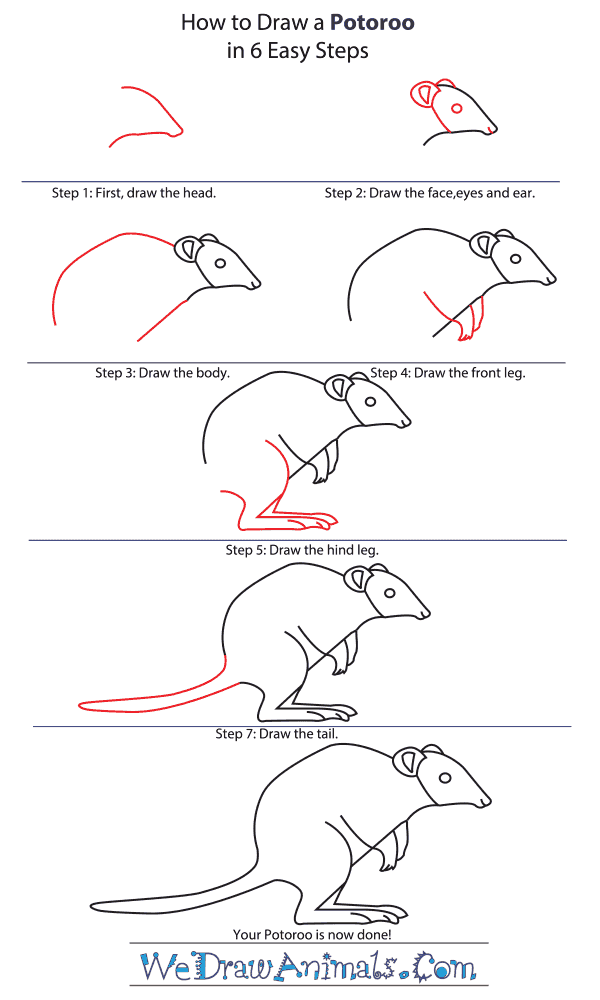In this quick tutorial you'll learn how to draw a Potoroo in 6 easy steps - great for kids and novice artists.
The images above represent how your finished drawing is going to look and the steps involved.
Below are the individual steps - you can click on each one for a High Resolution printable PDF version.
At the bottom you can read some interesting facts about the Potoroo.
Make sure you also check out any of the hundreds of drawing tutorials grouped by category.
How to Draw a Potoroo - Step-by-Step Tutorial
Step 1: Start by drawing the outline of the head
Step 2: Next, draw the face and the ears. The ears are circular shapes at the top of the head with half circles inside of them. Make a line separating the face from the neck, a cirle for the eye, and a tiny line for the mouth
Step 3: Draw the rounded body with one curved line on top and one shorter straight line on the bottom
Step 4: Draw the front arms and feet in the center. Make one arm coming from the middle of the body with a jagged edge for toes. Make a curved line to show the other arm behind it
Step 5: Draw the back legs. Start with a curved line going down from the center of the body to make the leg. Draw the feet straight and flat, making toes at the end.
Step 6: Finish by drawing the tail. It is made with two long lines that meet at the end. The tail is almost as long as the body
Interesting Facts about the POTOROO
The Potoroo is a member of the rodent family and the scientific term for them is Potorous tridactylus. Other common names for this animal is the Long-Nosed Potoroo, the Australian Potoroo, and the Rat-Kangaroo. This light grey mammal is native to Australia and is a marsupial. It is very elusive and has a long nose and jumps like a kangaroo. The nocturnal animal has curved claws on its hands for digging.
Did you know?
- The animal was first documented in the year 1792.
- They are more than 2 feet in length.
- This animal has a home of over 85 acres.
- The females can give birth 2 times per year.
- They consume more than 50 different kinds of fungus.
The males are not seen with others of the same species, except when mating or spending time with their babies. They are not territorial and the areas that they occupy are moist. These omnivores eat roots, fruit, flowers, seeds, insects, larvae, but mostly fungi. The early European settlers discovered this species as one of the first marsupials that they noticed, when they found the tunnels left behind when the animal was digging for different varieties of fungus.







